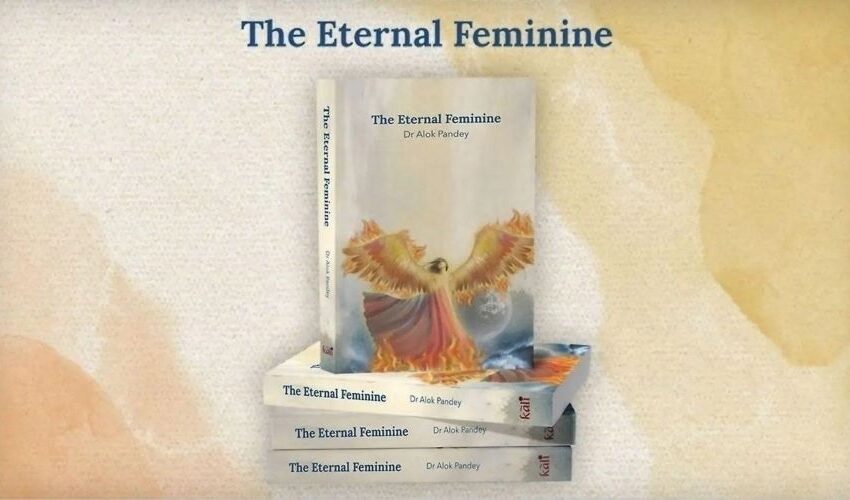Exploring the eternal feminine through legends & folklore, Gods & Godesses

Rajkumari Sharma Tankha
The Eternal Feminine (published by Kali) written by Dr Alok Pandey explores the spirit of feminism and embodies ancient myths, legends and folklore to reawaken the powerful image of women. The book explores the stories of women like Sita, Draupadi, Savitri, Sati-Parvati, Diti, Aditi among others, who are recognised not only for their power and fortitude, but also worshipped for the life they chose to live in the times they descended upon earth.
Through the stories of these women – even as the author tells women to not forget their innate power – he also sends out a strong message to all the men out there to remember and to always keep in mind that each woman is a reservoir of vigour, force, and energy. And, meddling with this power or belittling her role is a ready recipe for disaster (as witnessed at the time of Sati). Man, without woman is powerless, he says.
Deva without Devi is powerless, The Purusha without Prakriti is helpless and the Ishwara without His Shakti is a silent witness who can neither intervene nor help our evolutionary journey, says the author in preface.
In no uncertain terms, the author tells us that women are considered weak only by the ignorant, for to the knowledgeable. the female gender is the most powerful, particularly when we it comes to wisdom, strength, and love.
As he says: A woman is not just a form and a figure though her form itself is significant of deep guarded secrets and the capacity to create marvels out of a seed state. The ancient seers saw in her the bridge between creation and the creator and worshipped her thus. But she is not just a woman but force, shakti, wisdom, strength, beauty, love, delight that is everywhere and in all beings. This book is not just an attempt to discover and evoke her through myths and legends of India but to unravel her mysteries.
Dr Pandey has also covered all the aspects of Yoga, Tantra Mantra and Philosophy. And, seeks to tell us more about the mystics and spiritual culture of India and also the Hindu philosophy and religion.
The book has separate chapters on two of major Hindu epics – Ramayana and Mahabharata, wherein the author talks in detail about the messages yogis – spiritual psychologists as he calls them – who wrote these books wanted to send across to people through these. “These epics have to be red and understood, not at the surface level, one has to go at a deeper level to understand what’s written in between the lines and what’s hidden behind the words,” he says in the book.
I have a few reservations though: First, while the author refers to the characters of Ramayana and Mahabharata as people who once lived on the earth, he still calls these epics ‘myths’… And second, when he goes into detail about different devis, devtas, rishis and God, his writing becomes convoluted, and is difficult to comprehend by a common man. At a number of places, he has tried to explain the spiritual concepts giving the allegories of devis, devtas, asuras etc but this sudden jumping from physical to non-physical (spiritual) is jarring, as also tough for a layman who has no knowledge of subtle body and chakra system that only a person with considerable spiritual knowledge can understand. At places, though, he has resorted to directly quoting Sri Aurobindo and Mother, which gives a better clarity to the concept he is trying to explain.

